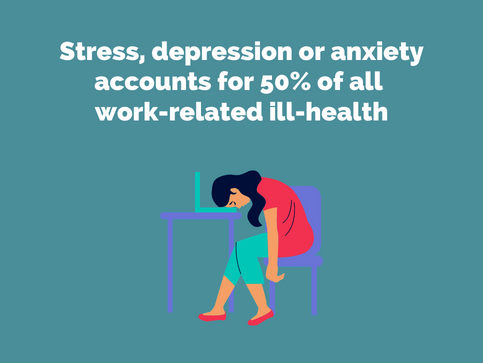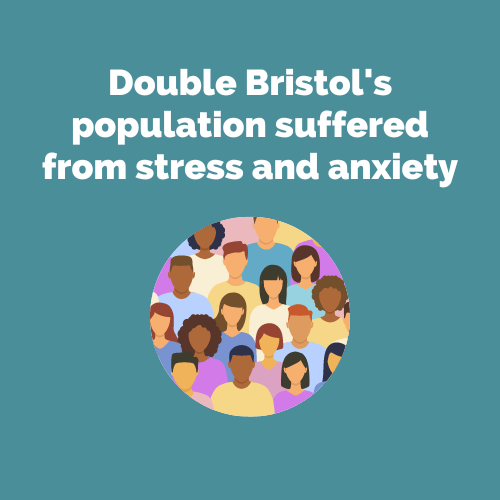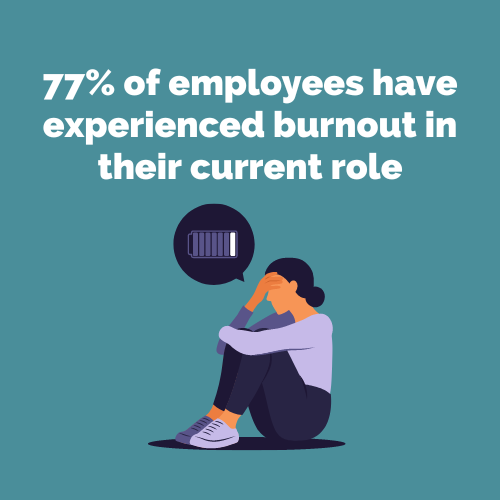5 stats on workplace stress and how to reduce it
If your employee retention isn’t as good as you’d like, then one of the causes could be stress in the workplace.
In 2020/21, work-related stress, depression or anxiety accounted for 50% of all work-related ill-health.
ClearTalents reduces workplace stress for your employees.
Claim your free try before you buy offer.
For international stress awareness week (7-11 November 2022), ClearTalents explored key statistics relating to stress in the workplace and how employers can address the causes of stress at work.

Statistic 1: How has Covid-19 impacted work-related stress?
Hybrid working is the new normal, so how has this shift impacted workers’ well-being?
Statistics from the UK’s Health and Safety Executive (HSE) show that in the pre-pandemic years, rates of self-reported work-related stress, anxiety and depression had shown signs of increasing.
In 2020/21, rates were higher, but the HSE noted that this was not statistically different to the previous year. However, of the 822,000 workers suffering from work-related stress, depression or anxiety in 2020/21, an estimated 449,000 reported that this was caused or made worse by the effects of the coronavirus pandemic, said the HSE.
Other statistics show that workplace adjustments haven’t always progressed from the office to the home office and that many disabled workers are being left behind.

How to support remote and hybrid workers
ClearTalents allows employees to create up to three profiles, including one for in the office, one for working at home and a third for hybrid working.
For example, employees can self-disclose sources of stress and enable you to make reasonable adjustments that will help you retain staff. A reasonable adjustment might be to allow someone with neurodiverse needs to keep their camera switched off while working from home.
Contact ClearTalents to find out more about ClearTalents At Work.
Statistic 2. How does stress vary by organisation and sector?
Small workplaces had a statistically significantly lower rate of work-related stress, depression or anxiety, whilst medium and large enterprises had a statistically significantly higher rate, found the HSE.
Stress at work is higher than average in the Education, Human health and social work activities and public administration and defence sectors.
Those in professional organisations have the highest stress, depression and anxiety rate per 100,000 workers.
To try before you buy, contact us for a one-month, free trial for up to 25 employees and a taster of our dashboard and reporting that informs managers and HR professionals.

A scalable solution for all organisations
ClearTalents At Work is a one-stop shop for reasonable adjustment guidance in the workplace. We increase productivity and retention by identifying the tools employees need to do their work effectively.
Statistic 3: How many employees suffer from stress in the workplace?
In the UK, an estimated 822,000 workers were affected by work-related stress, depression or anxiety. That’s double Bristol’s population and greater than Leeds’ population.
Stress, depression and anxiety are often invisible. ClearTalents’ profiles allow employees to self-disclose challenges and, where they do, to probe deeper. For example, we ask if people feel stressed or anxious while communicating. If the answer is ‘yes’, ClearTalents suggests things that might help, such as providing information in advance.
The employee can tick adjustments they find helpful.
Find out more about ClearTalents At Work.

Statistic 4. How common is burnout, and what is burnout?
Employee burnout is a global concern. A report by Deloitte found that 77% have experienced burnout in their current role.
Burnout, according to the Mayo Clinic, is a specific type of work-related stress.
It is: “a state of physical or emotional exhaustion that also involves a sense of reduced accomplishment and loss of personal identity.”
The same Deloitte report found that work stress ripples out, with 91% saying that unmanageable stress or frustration impacts the quality of their work and 83% saying burnout negatively impacts personal relationships.
This same survey found that nearly 70% of professionals feel their employers are not doing enough to prevent or alleviate burnout.
25% of these surveyed did not use all their vacation time.

Statistic 5. How many workdays are lost to mental health issues?
According to the World Health Organisation (WHO), an estimated 12 billion working days are lost every year worldwide to depression and anxiety at the cost of US$ 1 trillion per year in lost productivity.
There are practical actions to prevent mental health risks at work, protect and promote mental health at work, and support workers with mental health conditions.
ClearTalents is proven to reduce employee sickness. Contact ClearTalents to find out more.
The WHO offers tips on supporting people with mental health conditions to thrive at work, including:
- Making reasonable adjustments such as flexible hours and more time to complete tasks or regular supportive meetings with supervisors
- Return to work programmes for people who have been off with stress
- Supported employment initiatives to help people with severe mental health conditions get paid work.
Follow us on LinkedIn for regular tips on supporting employees
